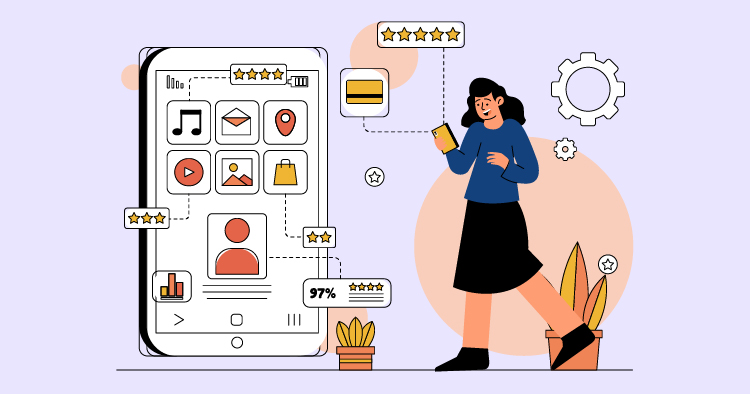Creating a solid online presence is essential for any business, and the key to this lies in the combination of good web design and solid web development. When you visit a website, it’s like walking into a store for the first time. The layout, the colors, and how easy it is to find what you need all contribute to your experience. A website that looks great and works well can make a lasting impression. It’s not just about looking good; it’s about providing a smooth journey for visitors. When design and development work together, they create a website that’s not just a pretty face but a powerful tool that works hard for the business. This teamwork is vital for staying ahead in a competitive market.
Why Web Design Matters for Your Business
Good web design is more than just making a site look pretty. It’s about creating a solid first impression and building trust with your audience. The colors, fonts, and layout you choose directly reflect your brand and what it stands for.
Having a responsive website is also non-negotiable. With more people using mobile devices to browse the internet, your site must look and work well on all screens. This consistency keeps users happy and can lead to more time spent on your site and less clicking away.
Another must-have is a user-friendly website. If visitors can’t find what they’re looking for quickly and easily, they will probably leave and not return. Good navigation and usability are crucial to keeping people on your site and turning them into customers.
The Importance of Web Development for Your Business
While web design covers the look and feel of your site, web development is all about the behind-the-scenes functionality. The development work allows your site to perform tasks, whether handling sales, generating leads or offering customer support.
Interactive elements and user-friendly interfaces can make a website more appealing and easier to use. Chatbots and personalized experiences can make your site more engaging, helping your business run more smoothly and efficiently.
For businesses selling online, e-commerce integration is vital. A sound e-commerce system with secure payments and an easy-to-use shopping cart can make a big difference in your sales and how loyal your customers are.
Web Design and SEO: A Powerful Combination
SEO isn’t just about keywords; it’s also closely linked to web design. A well-designed, SEO-friendly website is more likely to show up higher in search results, bringing in more organic traffic.
Select one of over 500 designs and establish your online presence.
- Free Web Hosting
- Fully Managed Solutions
- Scalable Websites
- No Hidden Cost
Design choices like optimized images and fast load times are essential for SEO. They make your site more attractive to search engines, which means potential customers are more likely to find it.
Using on-page SEO techniques, like the correct headers and meta tags, helps search engines understand your site’s content. This can improve your site’s ranking for the searches that matter most to your business.
Building a Strong Brand Identity through Web Design
Creating a solid brand identity is a crucial goal in web design. When you visit a website, the colors, fonts, and style give you an immediate sense of the brand’s personality. For example, a playful font and bright colors might suggest a fun and creative company. In contrast, a clean, minimalist design with neutral colors could show a more serious and professional business. Using these design elements consistently throughout the site is essential to ensure the brand image is clear and memorable.
Having a consistent brand helps people recognize and trust your company. When every part of your website – from the images to the words – matches the overall brand style, it makes a stronger impression on visitors. This consistency helps build a reliable and trustworthy image online.
The Role of Content in Web Design and Development
Content is at the heart of web design and development. It’s not just about looking good; it’s also about providing valuable information that keeps visitors interested. Quality content can make your brand look like an expert in its field, which builds trust with your audience.
It’s also essential to write content that search engines can find easily. This means using keywords that people might search for, but naturally, that still makes sense to the reader. When you get this right, your website can show up higher in search results, leading to more people visiting your site.
To make sure people click on your website from search results, use catchy headlines and include keywords smoothly in your content. You want to write in a way that focuses on what users want to know. This approach helps attract visitors and keeps them engaged with your site.
Mobile-First Approach: Designing for the Growing Mobile User Base
Designing with mobile users in mind is crucial because so many people use their smartphones to go online. By focusing on mobile users first, you can make sure your website works well on smaller screens.
Responsive design is all about ensuring your site looks great and is easy to use, no matter what device someone uses. This means everything on the website – like the layout, pictures, and text – changes size smoothly to fit screens of all sizes.
Select one of over 500 designs and establish your online presence.
- Free Web Hosting
- Fully Managed Solutions
- Scalable Websites
- No Hidden Cost
But there’s more to mobile design than just making things look good. It’s also about ensuring the site is easy to use on a touch screen, that images and videos load quickly even on slower mobile networks, and that every feature works perfectly on mobile devices.
Integrating Social Media and Web Design for Business Success
By blending social media into your web design, you can reach more people and get them involved with your brand. Adding links to your social media pages, displaying feeds on your site, and including buttons so visitors can easily share your content helps spread the word about your business.
Encouraging visitors to share your content with their followers can dramatically increase your brand’s visibility. This can lead to more people visiting your site and potentially becoming customers.
You can also use social media to build trust with your audience. By showing real reviews and interactions on your website, you give visitors proof that other people value your brand. This social proof can make new visitors more likely to trust you and try out your products or services.
Website Analytics and Optimization for Continuous Improvement
Keeping a close eye on your website’s performance is critical to improving it. Tools that track user behavior, traffic sources, and the number of visitors who are doing what you want them to do (like buying something or signing up) are handy. They give you a clear picture of what’s happening on your site.
With this information, you can make intelligent choices about how to design and update your website. You’ll know what’s working with your audience and what’s missing, so you can make changes that count. This could mean tweaking your site to get more people involved and encourage more of them to take the actions you want.
By using what you learn from analytics to guide the changes you make to your website, you can keep it working well and staying relevant. Keeping your site up-to-date and responding to what your users tell you and what the data shows will help your website keep in line with what your business wants to achieve and what your users need.
Security and Trust: Ensuring a Safe Online Experience
Safety comes first for websites. You want the people visiting your site to feel secure, especially when sharing personal information. Using security tools like SSL certificates, which create a secure link between a website and a visitor’s browser, is essential to protecting data.
It’s also good to teach your visitors how to be safe online, such as spotting a secure website and avoiding dodgy links. Being open about security steps and your privacy policy can make your users feel more at ease. They’ll know you’re looking out for their safety, making them trust your website more.
The Cost-Effective Approach: DIY vs. Professional Web Design and Development
Deciding whether to build a website independently or hire professionals can be challenging for small businesses. Going the DIY route might seem like a way to save money, but it often falls short on customization, advanced features, and the know-how pros bring.
When you go with professional web design and development, you get a service made just for you, fitting your business and what you want to achieve. Professionals bring the latest design trends, technology, and best practices to your project.
If you’re considering hiring someone to help with your website, look at their past work, their experience, how well they understand your type of business, and what their customers say about them. The right choice here can make a big difference in how well your website works and its success.
Final Thoughts
Combining web design and development is necessary for any business that wants to impact online. It’s like peanut butter and jelly – both are well on their own, but together, they’re a perfect match. This combination ensures that a website looks nice and works like a charm. As new technologies emerge, the bar keeps increasing, and businesses must keep up. Ultimately, a business’s online success depends on its ability to blend eye-catching design with a robust and technical backbone. This creates a website that draws people in and gives them a reason to stay and engage with what the business offers.



